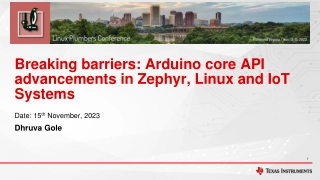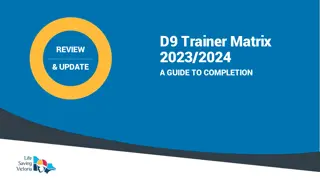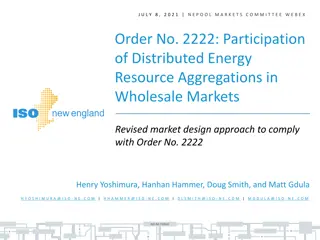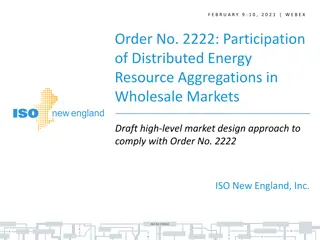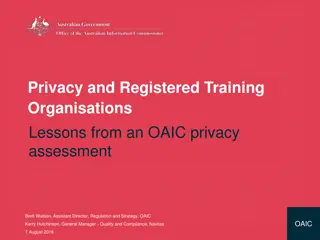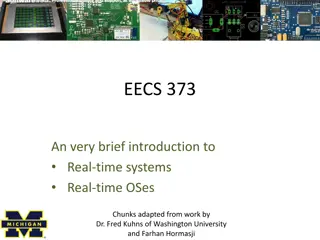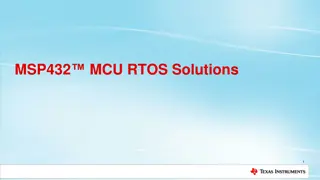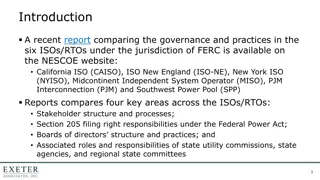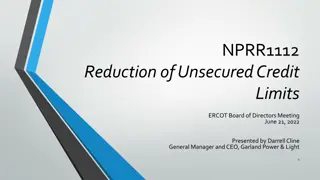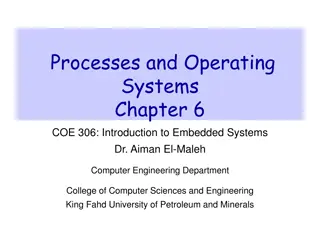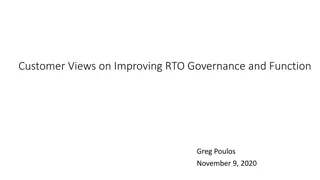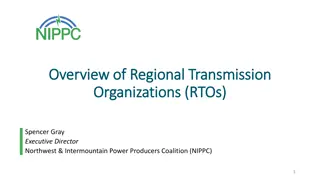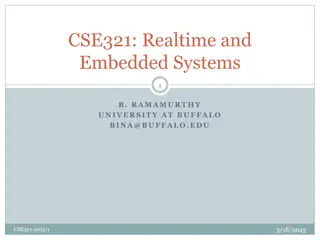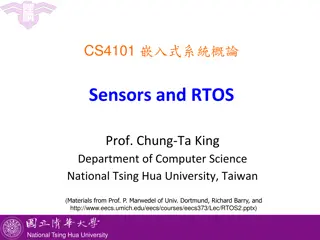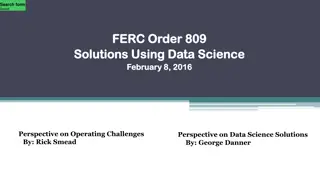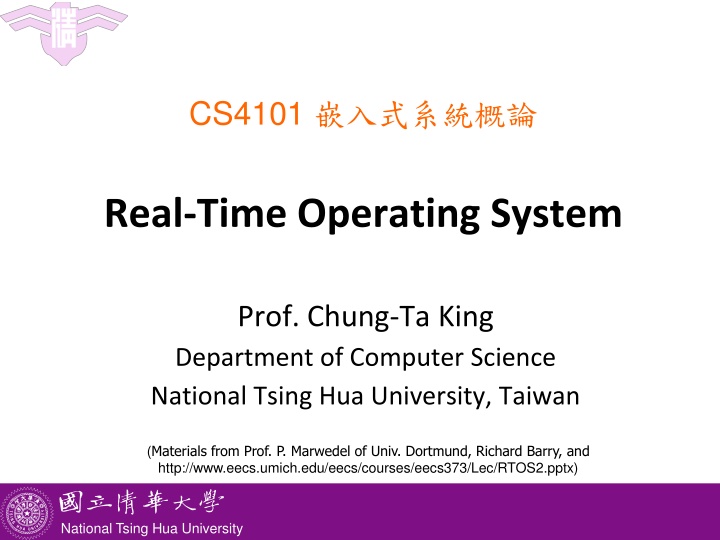
Embedded Operating Systems Overview
Explore the characteristics and differences of embedded operating systems compared to desktop OS. Learn about resource management, code placement, and configuration requirements for embedded systems. Discover the fusion of applications with OS in a single unit for efficient operation.
Download Presentation

Please find below an Image/Link to download the presentation.
The content on the website is provided AS IS for your information and personal use only. It may not be sold, licensed, or shared on other websites without obtaining consent from the author. If you encounter any issues during the download, it is possible that the publisher has removed the file from their server.
You are allowed to download the files provided on this website for personal or commercial use, subject to the condition that they are used lawfully. All files are the property of their respective owners.
The content on the website is provided AS IS for your information and personal use only. It may not be sold, licensed, or shared on other websites without obtaining consent from the author.
E N D
Presentation Transcript
CS4101 Real-Time Operating System Prof. Chung-Ta King Department of Computer Science National Tsing Hua University, Taiwan (Materials from Prof. P. Marwedel of Univ. Dortmund, Richard Barry, and http://www.eecs.umich.edu/eecs/courses/eecs373/Lec/RTOS2.pptx) National Tsing Hua University
Outline Introduction to embedded operating systems Comparison with desktop operating systems Characteristics of embedded operating systems Introduction to real-time systems and operating systems Overview of real-time systems Characteristics of real-time operating systems (RTOS) Introduction to FreeRTOS Tasks 1 National Tsing Hua University
Operating Systems The collection of software that manages a system s hardware resources Often include a file system module, a GUI and other components Often times, a kernel is understood to be a subset of such a collection Characteristics Resource management Interface between application and hardware Library of functions for the application User Application Operating System HARDWARE 2 National Tsing Hua University
Embedded Operating Systems Fusion of the application and the OS to one unit Characteristics: Resource management Primary internal resources Less overhead Code of the OS and the application mostly reside in ROM User Operating System + Application HARDWARE 3 National Tsing Hua University
Desktop vs Embedded OS Desktop OS: applications are compiled separately from the OS Embedded OS: application is compiled and linked together with the embedded OS On system start, application usually gets executed first, and it then starts the RTOS Typically only part of RTOS (services, routines, or functions) needed to support the embedded application system are configured and linked in (Dr Jimmy To, EIE, POLYU) 4 National Tsing Hua University
Characteristics of Embedded OS Embedded OS need to be configurable: No single OS fit all needs install only those needed e.g., conditional compilation using #if and #ifdef Device drivers often not integrated into kernel Embedded systems often application-specific specific devices move devices out of OS to tasks Embedded OS Standard OS kernel 5 National Tsing Hua University
Characteristics of Embedded OS Protection is often optional Embedded systems are typically designed for a single purpose, untested programs rarely loaded, and thus software is considered reliable Privileged I/O instructions not necessary and tasks can do their own I/O, e.g., switch is address of some switch Simply use load register, switch instead of OS call Real-time capability Many embedded systems are real-time (RT) systems and, hence, the OS used in these systems must be real-time operating systems (RTOSs) 6 National Tsing Hua University
Outline Introduction to embedded operating systems Comparison with desktop operating systems Characteristics of embedded operating systems Introduction to real-time systems and operating systems Overview of real-time systems Characteristics of real-time operating systems (RTOS) Introduction to FreeRTOS Tasks 7 National Tsing Hua University
What is a Real-Time System? Real-time systems have been defined as: "those systems in which the correctness of the system depends not only on the logical result of the computation, but also on the time at which the results are produced" J. Stankovic, "Misconceptions about Real-Time Computing," IEEE Computer, 21(10), October 1988. 8 National Tsing Hua University
Real-Time Characteristics Pretty much typical embedded systems Sensors and actuators all controlled by a processor The big difference is timing constraints (deadlines) Tasks can be broken into two categories1 Periodic Tasks: time-driven, recurring at regular intervals A car checking for pedestrians every 0.1 second An air monitoring system taking a sample every 10 seconds Aperiodic: event-driven The airbag of a car having to react to an impact The loss of network connectivity 1Sporadic tasks are sometimes considered as a third category. They are tasks similar to aperiodic tasks but activated with some known bounded rate, which is characterized by a minimum interval of time between two successive activations. 9 National Tsing Hua University
Soft, Firm and Hard deadlines The instant at which a result is needed is called a deadline If the result has utility even after the deadline has passed, the deadline is classified as soft, otherwise it is firm If a catastrophe could result if a firm deadline is missed, the deadline is hard 10 National Tsing Hua University
Scheduling algorithms A scheduling algorithm is a scheme that selects what job to run next Must be able to meet deadlines in all cases Can be preemptive or non-preemptive Dynamic or static priorities Two representative RT scheduling algorithms Rate monotonic (RM): static priority, simple to implement, nice properties Earliest deadline first (EDF): dynamic priority, harder to implement, very nice properties 11 National Tsing Hua University
Rate Monotonic Scheduling RMS [Liu and Layland, 73]: widely-used, analyzable scheduling policy Assumptions: All processes run periodically on single CPU Zero context switch time No data dependencies between processes Process execution time is constant Deadline is at end of respective period Highest-priority ready process runs Tasks can be preempted 12 National Tsing Hua University
Rate Monotonic Scheduling Optimal (fixed) priority assignment: Shortest-period process gets highest priority, i.e., priority inversely proportional to period Break ties arbitrarily No fixed-priority scheme does better In terms of CPU utilization while ensuring all processes meet their deadlines 13 National Tsing Hua University
RMS Example Process P1 P2 P3 Execution time 1 2 3 Period 4 6 12 Preempted Resumed Resumed Preempted P3 P3 P3 P2 P2 P1 P1 P1 time 6 12 0 2 4 8 10 14 National Tsing Hua University
RMS Example Process P1 P2 P3 No feasible task assignment to satisfy deadlines: In 12 unit intervals, execute P1 3 times, P2 2 times, P3 1 times (6+6+3)=15 unit intervals Let n be # of tasks, if total utilization < n(21/n-1), tasks are schedulable (at n= 69.3%) This means that RMS algorithm will work if the total CPU utilization is less than 2/3! Execution time 2 3 3 Period 4 6 12 15 National Tsing Hua University
Earliest-Deadline-First Scheduling (EDF) Process closest to its deadline has highest priority Requires recalculating processes at every time unit Dynamic priority assignment: priority of a task is assigned as the task arrives Tasks do not have to be periodic EDF is an optimal uniprocessor scheduling algorithm Can use 100% of CPU Scheduling cost is high and ready queue can reassign priority May fail to meet a deadline Cannot guarantee who will miss deadline, but RMS can guarantee that the lowest priority task miss deadline 16 National Tsing Hua University
Example of EDF Algorithm T1: period 2; execution time 0.9 T2: period 5; execution time 2.3 T1 preempts T2 At time 4.1, J2.1 completes, J1.3 starts to execute J1.3 is 6, J2.1 is 5 Priority: T2>T1 J1.1 is 2, J2.1 is 5 Priority: T1>T2 T1 2 4 6 8 J1.2 is 4, J2.1 is 5 Priority: T1>T2 T2 10 5 17 National Tsing Hua University
Outline Introduction to embedded operating systems Comparison with desktop operating systems Characteristics of embedded operating systems Introduction to real-time systems and operating systems Overview of real-time systems Characteristics of real-time operating systems (RTOS) Introduction to FreeRTOS Tasks 18 National Tsing Hua University
Goals of an RTOS Manage to meet RT deadlines Also like Deadlines met Ability to specify scheduling algorithm Interrupts are fast Interrupt prioritization easy to set Tasks stay out of each others way Normally through page protection Device drivers already written (and tested!) for us Portable runs on a huge variety of systems Nearly no overhead so we can use a small device! That is a small memory and CPU footprint 19 National Tsing Hua University
Requirements for RTOS Predictability of timing behavior of the OS Upper bound on execution time for all OS services Scheduling policy must be deterministic Period in which interrupts are disabled must be short (to avoid unpredictable delays in processing critical events) OS should manage timing and scheduling OS has to be aware of task deadlines (unless scheduling is done off-line) OS should provide precise time services with high resolution Important if internal processing of the embedded system is linked to an absolute time in the physical environment 20 National Tsing Hua University
Functionality of RTOS Kernel Processor management Memory management Timer management Task management (resume, wait, etc.) Inter-task communication Task synchronization resource management 21 National Tsing Hua University
Outline Introduction to embedded operating systems Comparison with desktop operating systems Characteristics of embedded operating systems Introduction to real-time systems and operating systems Overview of real-time systems Characteristics of real-time operating systems (RTOS) Introduction to FreeRTOS Tasks 22 National Tsing Hua University
Three Main Areas in FreeRTOS Tasks Almost half of FreeRTOS's core code deals with tasks (in task.c and task.h) Creating, scheduling, and maintaining tasks Communication 40% of FreeRTOS's core code deals with communication (in queue.c and queue.h) Tasks and interrupts use queues to send data to each other and to signal the use of critical resources Hardware interface Most FreeRTOS code is hardware-independent. About 6% of code to interface to hardware-dependent code (http://www.aosabook.org/en/freertos.html) 23 National Tsing Hua University
Tasks In FreeRTOS each thread of execution is called a task Tasks are implemented as C functions that must return void and take a void pointer parameter: void ATaskFunction(void *pvParameters); A task is a small program that has an entry point, will normally run forever within an infinite loop, will not exit void ATaskFunction(void *pvParameters) { /* Each instance of task will have its own copy of variable */ int iVariableExample = 0; /* A task is normally implemented in infinite loop */ for( ;; ) { /* task functionality */ } /* Should the code ever break out of the above loop then the task must be deleted. */ vTaskDelete(NULL); /* NULL: this task */ } 24 National Tsing Hua University
Task Creation xTaskCreate( pvTaskCode, pcName, usStackDepth, pvParameters, uxPriority, pxCreatedTask ) pvTaskCode: pointer to task entry function, implemented to never return pcName: a descriptive name for the task to facilitate debugging usStackDepth: size of task stack, specified as the number of variables that the stack can hold pvParameters: pointer to parameters for the task uxPriority: priority at which the task should run pvCreatedTask: pass back a handle by which the created task can be referenced 25 National Tsing Hua University
Example: Creating a Task int main(void) { xTaskCreate(vTask1, /* Pointer to func. for the task */ "Task 1", /* Text name for the task */ 1000, /* Stack depth */ NULL, /* NULL task parameter */ 1, /* This task will run at priority 1 */ NULL ); /* Do not use the task handle */ xTaskCreate( vTask2, "Task 2", 1000, NULL, 1, NULL ); /* Start the scheduler so the tasks start executing */ vTaskStartScheduler(); /* If all is well then main() will never reach here as scheduler will be running the tasks. If main() reaches here then it is likely that insufficient heap memory available for the idle task to be created */ for( ;; ); } 26 National Tsing Hua University
Example: Creating a Task void vTask1(void *pvParameters) { const char *pcTaskName = "Task 1 is running\r\n"; volatile unsigned long ul; for( ;; ) { /* Print out the name of this task. */ vPrintString(pcTaskName); /* Delay for a period. */ for( ul = 0; ul < mainDELAY_LOOP_COUNT; ul++ ) { } } } 27 National Tsing Hua University
vTaskStartScheduler Starts the RTOS scheduler RTOS kernel has control over which tasks are executed and when Create an Idle task first preventing there is no task running The idle task has the lowest priority Only return if there is insufficient RTOS heap 28 National Tsing Hua University
Task States in FreeRTOS Running: Task is actually executing Only one task can exist in the Running state at any one time Ready: Task is ready to execute but a task of equal or higher priority is Running. 29 National Tsing Hua University
Task States in FreeRTOS Blocked: Task is waiting for some event Time: if a task calls vTaskDelay() it will be blocked until the delay period has expired Resource: tasks can also block waiting for queue and semaphore events Suspended: Much like blocked, but not waiting for anything Tasks will only enter or exit the suspended state when explicitly commanded to do so through the vTaskSuspend() and xTaskResume() API calls respectively 30 National Tsing Hua University

